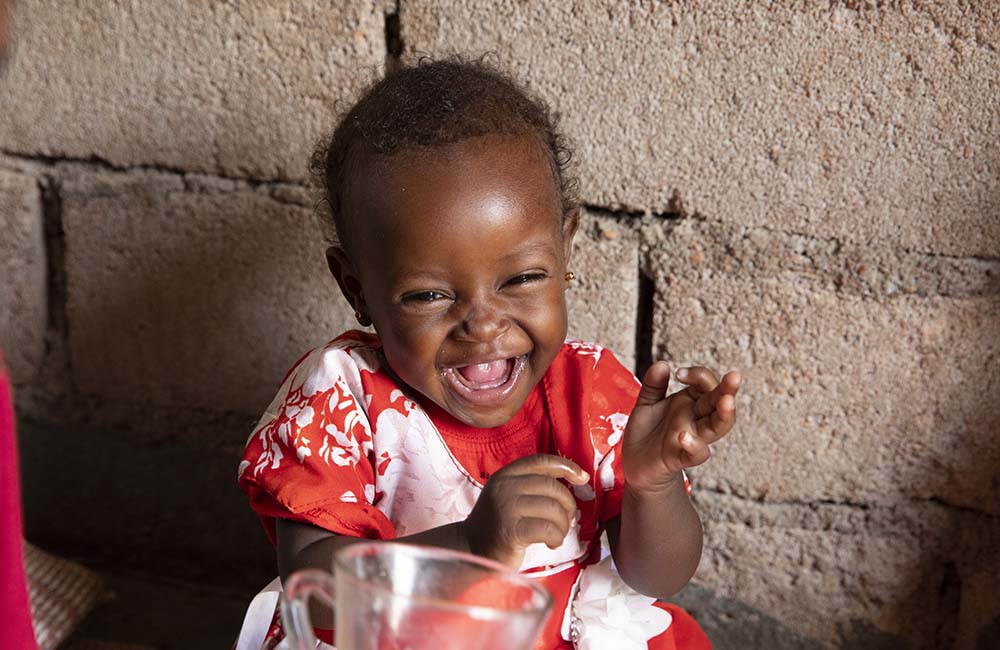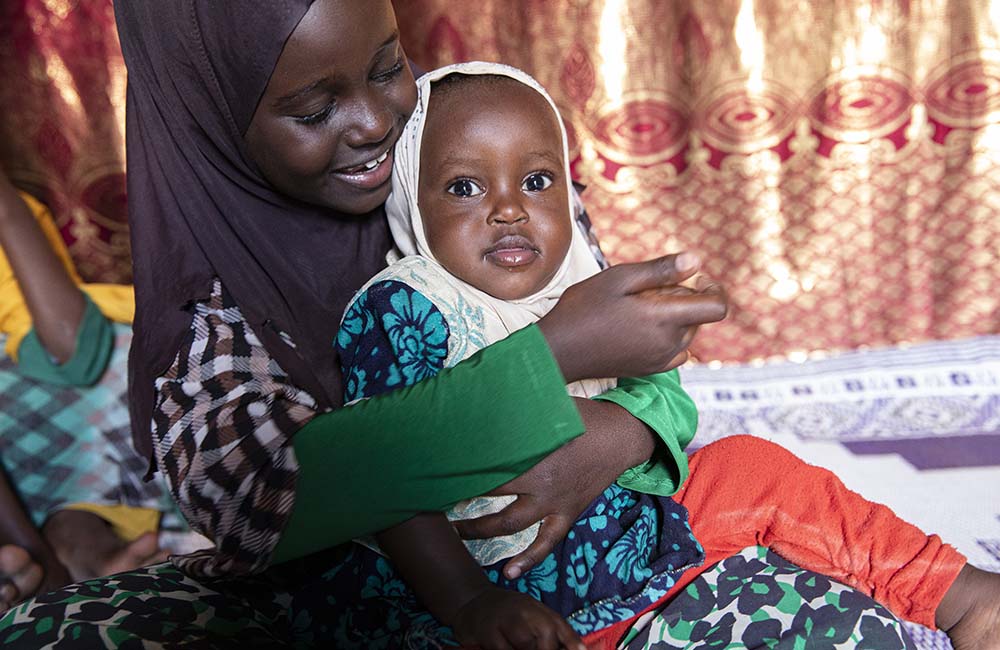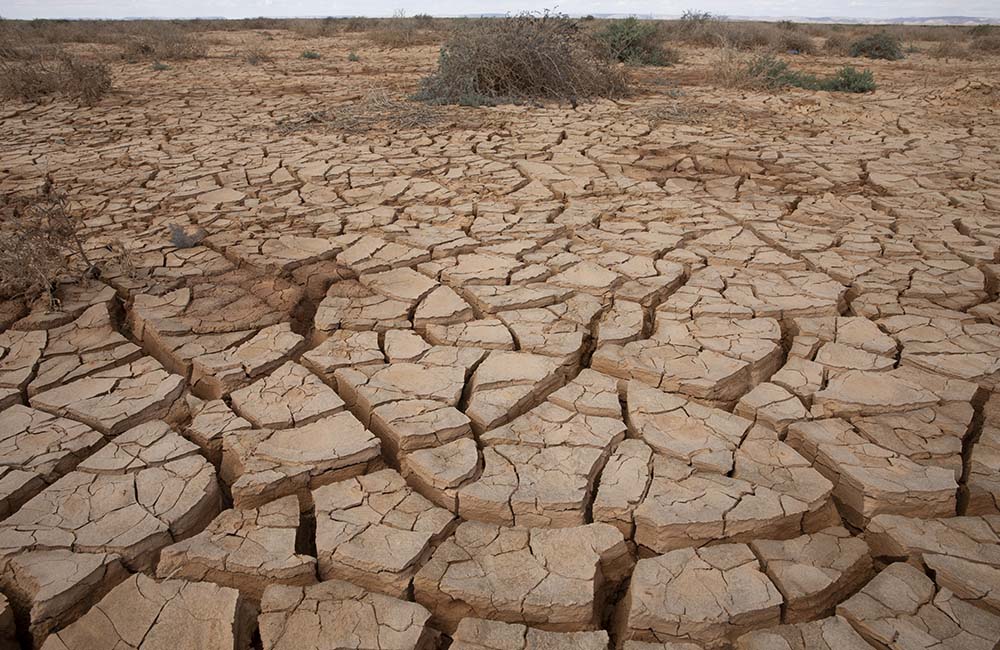Drought drives malnutrition in Somalia
“I am 11 years old. I live in Somalia, and I am in grade two at school.”
This is Fatun*. She loves to make her four-year-old sister Rhama* laugh, and she has a bit of a sweet tooth.
“My favourite food are pancakes because they are sweet!”

Fatun making her sister Rhama smile after she returned home from the stabilisation centre.
The hot weather and the drought
While Fatun and Rhama have access to quality food like rice, spaghetti, bread and pancakes now, this was not always the case. We shared Rhama’s story when we first met the sisters in 2020 and a drought had wrought havoc on their family’s livelihood.
“We had goats, but they were killed by the hot weather and the drought,” Fatun explains. The goats had been their main source of income. This meant they had less money for food.
Fatun’s sister Rhama was 9 months old at the time and became very sick with Severe Acute Malnutrition (S.A.M). This was caused by the family simply not having enough nutritious food to eat.
“Rhama got sick. She had diarrhoea and was vomiting,” Fatun recalls, “she was too slim and her condition was not good.”
When Rhama was referred to a Save the Children-supported stabilisation centre, she was given intravenous fluids, a special formula rich in carbohydrates, and a peanut paste packed with protein, minerals and vitamins.
Within hours of this treatment a child with S.A.M. can start to recover. The immune system becomes stronger and can protect against illnesses and infection.
Rhama responded well to the treatment made possible by our supporters. After 10 days her weight had increased from 5.7kg to 6.3kg and she was healthy enough to return home where her big sister Fatun was eagerly awaiting.
“Ever since Rhama recovered and was taken out of hospital, she has been healthy … I play with her and make her laugh all the time. I tell her stories and her she keeps laughing!”

Fatun and Rhama, on a follow-up visit, four months after Rhama returned from Gardo Stabilisation Centre.
We returned to see the family in 2022 and were delighted to see that Rhama is healthy and happy. Fatun still plays games with her and they laugh a lot together. Sadly, this is not the case for many other children in their community.
Cases on the rise again
For the first time since the stabilisation centre was built, the number of cases of children with S.A.M. has reached over 30 per week.
The lead nurse at the centre, Fatima, says there is a direct correlation between rainfall in the region and the cases of malnutrition they see.
“When the rains are not enough and people can’t recover from drought we see a lot of admissions. If the rains are good, there are less people coming,” says Fatima.
Since the drought of 2019 the rains have failed for four consecutive seasons. Crops and animals’ grazing land have turned to dust, destroying livelihoods and putting more children at risk of malnutrition.

Climate change-induced drought has exacerbated the hunger crisis in Somalia where 386,000 children are
at risk of Severe Acute Malnutrition (S.A.M.).
The economic impact of the pandemic has added more pressure on families, while the global shortage of grain as a result of the war in Ukraine has sent food prices in East Africa soaring. The compounding effects of climate change, COVID-19 and conflict has rendered many in the region unable to feed their family.
With S.A.M. currently threatening the lives of 386,000 children across the country, Save the Children is supporting hospitals and stabilisation centres to provide life-saving care.